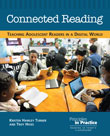
For anyone that has read this blog, seen my guest post on the Heinemann website, or heard me speak in the past few months, you know that I am becoming more and more intrigued with Mozilla’s Popcorn as a digital writing tool. Last week, my students in ENG 201 started playing around with Popcorn as one possible tool for creating their final, multimedia projects.
Before I share this example from one of my students, Cali Winslow, I wanted to note just a few quick notes about helping guide students to this point of the semester.
First, I have been fortunate enough to teach and honors section this semester. While most times I teach English 201 I am focused in on various forms of academic writing, and especially on the techniques of argument, this particular semester has been interesting because I am guiding students, as freshmen, to think about what they want to do for their senior honors capstone research project. As a part of this work, students will be submitting what I’m calling a “very rough draft” of what they would like to do as a senior honors project proposal.
Second, because we’ve been talking about digital writing throughout the semester, I am asking them to share their final presentation not just as a PowerPoint, but in some kind of multimedia form. Over the past few weeks we have begun looking at a number of different tools, and Popcorn is one of them. My hope is that the few students will use this tool for their final projects, especially since I have so many students interested in topics related to media.
All of this is a lead up to what I found to be a truly wonderful project. Mind you, this was meant as an opportunity for play and exploration, a formative assessment opportunity just to see what students could come up with in a limited amount of time. My guess is that Cali spent much more than just a “few extra minutes” outside of class to get this creative representation of her many “fandoms.” In fact, she noted in her reflection, there are many things to consider when embarking on such a project:
This project revealed some important benefits and drawbacks of using multimedia presentations. One clear benefit is that, if executed properly, it can provide a concise, engaging presentation related to the topic. A one-minute video can be much more compelling than a page of text presenting the same information. It also allows the author to be more creative in how they present their message, which can draw a wider audience. As with any media, however, there are some limitations. The biggest problem, in my presentation, was due to technological issues. As I mentioned, I had five tracks that were all timed precisely to fit with one another. Several times I tried to play them back and one would glitch and become out-of-sync with the others, which in some cases, even somewhat changed the message I was trying to get across (some of you may also have had this problem if you tried watching my video).
This is one of those projects where a student clearly went above and beyond, and I think you’ll find the final results to be compelling and creative. If this is what she was able to create just playing around with Popcorn for fun, I can’t wait to see what she — and all of my students — with their final projects.
Enjoy!

This work is licensed under a Creative Commons Attribution-NonCommercial-ShareAlike 4.0 International License.


